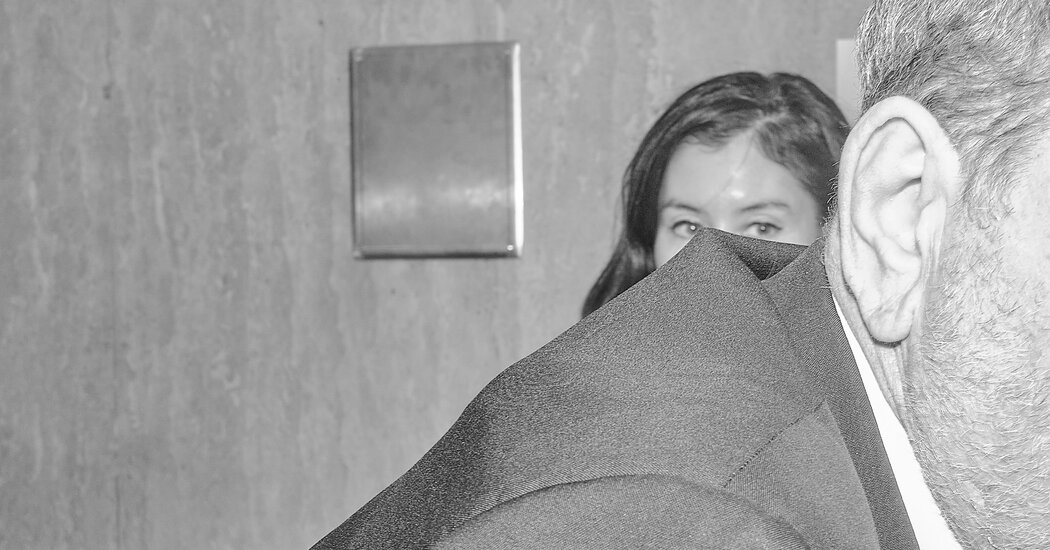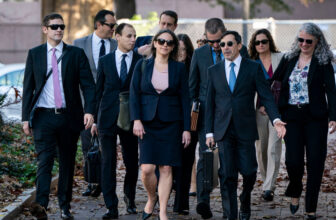
I often wake up these days feeling as though I’m living in an upside-down world. Thursday was one such morning: Just as Donald Trump prepared to spend another day in a Manhattan criminal court to face charges related to hush money paid to a porn star he allegedly had sex with, in the same spot where Harvey Weinstein was convicted of rape four years ago, Mr. Weinstein’s New York conviction was overturned.
The decision was determined by a single vote, by a majority-female panel of judges, who ruled that the trial court judge had improperly allowed testimony from accusers who weren’t part of the charges, compromising Mr. Weinstein’s right to a fair trial.
Those following Mr. Weinstein’s legal battles always knew there was a possibility that his conviction would be thrown out on appeal. But the nature of the decision, and its focus on several women who testified that Mr. Weinstein had assaulted them, even though none of those allegations had led to charges, revealed something that unsettled me.
Until Thursday, it seemed that we had entered a new age of accountability, legal and social, not just for Mr. Weinstein but also for the abusers who’d come after him. Even as the #MeToo movement fell short in some ways, the Weinstein case felt like a cultural marker — an Arthur’s sword in the stone moment, in which something irreversible happened. The monster of #MeToo had been vanquished, and it changed something about the way we understood vulnerability and power.
And then, suddenly, it didn’t.
To be clear, Thursday’s ruling will not spring Mr. Weinstein from behind bars. He already faced an additional 16 years from a separate conviction in California, and he may be sent there to serve out that sentence.
But in establishing the limits of these so-called prior bad act witnesses — an attempt by the prosecution in the case to show a pattern of coercion — the ruling did something else: It highlighted the striking gap between how we’ve come to believe women inside the courtroom and outside it.
One of the lasting and mostly positive outcomes of the #MeToo movement, thanks in large part to Mr. Weinstein’s accusers speaking out, has been the way that public perception of sexual assault has shifted. Cases that were once dismissed as “he said, she said” were suddenly made collective, as women all over the globe came forward to proclaim “they too” — sparking a global reckoning.
Today, the idea of believability in sexual assault cases has come to be synonymous with numbers: an army of voices, joining to corroborate a claim, is how we come to believe that a woman is telling the truth. It is also, by the way, how we as journalists have learned to present those cases — detailing patterns, repetitions and often decades’ worth of paper trails.
I arrived at The Times in 2017, just days before my colleagues Jodi Kantor and Megan Twohey began to publish groundbreaking charges against Mr. Weinstein. Accusations against him had been floating around Hollywood for years. But it was only through intensive corroboration, a paper trail and, importantly, the voices of multiple women that Ms. Kantor and Ms. Twohey were able to establish a pattern. The women of the Weinstein story became believable to the public because there were simply too many of them, with too many similar details, over too many years, for us not to believe.
Around 100 more women came forward with stories of sexual misconduct by Mr. Weinstein in the aftermath of that first article by Ms. Kantor and Ms. Twohey. The book and movie that followed were titled, aptly, “She Said” — a homage to that chorus of voices.
And yet inside the courtroom, as I reluctantly learned this week, the opposite can be true: She said, she said, she said, she said can unravel a prosecution.
Put bluntly: Our court system has not fully caught up to culture when it comes to understanding sexual violence. On its face, the veritable tsunami of damning evidence against Mr. Weinstein and others exposed for wrongdoing seemed to solve a problem that activists had labored over for decades: How do you combat the “he said, she said” nature of sexual assault cases?
While Mr. Weinstein’s accusers could, as Ms. Kantor wrote, fill a courtroom — and the women who proclaimed #MeToo in their wake could populate a small country — much of Mr. Weinstein’s appeal rested precisely on the argument that those voices ended up hurting, not helping, the case. As I read and reread the ruling, I realized the same swelling chorus of victims that made it possible for Mr. Weinstein to be held to account in the court of public opinion had somehow saved him in the court of law.
“What I tell my students is to think about the courtroom as an alternate universe,” said the legal scholar Deborah Tuerkheimer, when I called her to ask if I was crazy not to have seen this coming. A former Manhattan prosecutor and the author of the book “Credible: Why We Doubt Accusers and Protect Abusers,” she explained that, indeed, there is a tension between the principles of criminal prosecution — which tend to limit a defendant’s “other bad acts” or past behavior — and public perception of a credible allegation.
It is frustrating, of course, that the very reason there are so many women available to speak out is that the legal system has failed them from the start. In the Weinstein case, many of the accusations were about sexual harassment, which is a civil, not criminal, violation. Others fell beyond the statute of limitations.
But the legal system is not adequately set up to prosecute people accused of being serial sexual predators like Mr. Weinstein; it is, rightly, supposed to protect innocent people from being judged by their past behavior. (A person who has stolen once is not a lifelong thief, for one.) But sex crimes are more slippery than that, with patterns and power dynamics and less likelihood witnesses. Which can leave prosecutors in a Catch-22: To any casual observer, Mr. Weinstein’s history of accusations of abuse seems as though it should be admissible, and yet it was not.
Ms. Tuerkheimer noted that the closeness of the appeal’s ruling, as well as the back-and-forth from the judges, could (and perhaps should) revive debate about whether the rules for such convictions need to be updated. (In federal court, she said, there is a carve out for sexual assault that gives more leeway to prosecutors.) And yet, as it turns out, in some states — including California, where Mr. Weinstein’s lawyers plan to appeal next — they already have been.
Shortly after Mr. Weinstein was convicted in California in 2022, the former prosecutors Jane Manning and Tali Farhadian Weinstein argued in a guest essay for The Times that while trials should hold people accountable for bad acts, not bad reputations, the time had come to think about sex crimes differently. “Prosecutors should be able to argue something that tracks with common sense — that past predatory acts show a pattern of behavior,” they wrote.
If #MeToo could move the cultural conversation beyond a single case of “he said, she said,” isn’t it time the legal system allowed the same?
On Thursday, a few miles north of the criminal courthouse where Mr. Weinstein was convicted four years ago, the activist Tarana Burke appeared alongside Ashley Judd, one of Mr. Weinstein’s accusers, and urged the public to remember that movements like #MeToo are “long” and “strategic.” Even a decade ago, Ms. Burke said, “we could not get a man like Harvey Weinstein into the courtroom.”
“The bad thing about survivors is there are so many of us,” she told the crowd. “But the good thing about survivors is that there are so many of us.”





